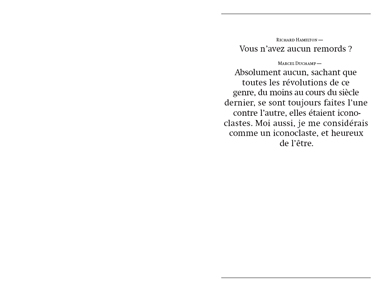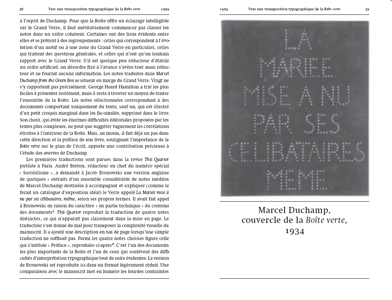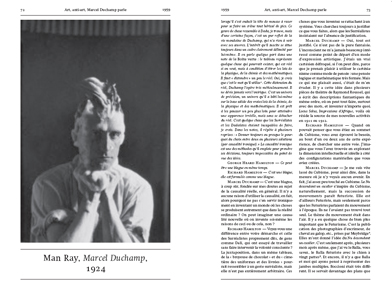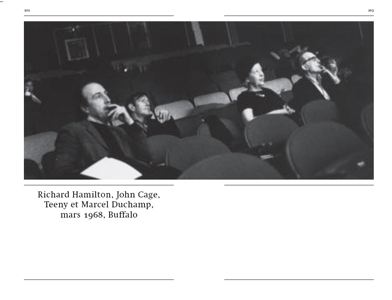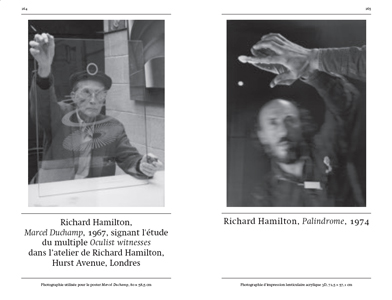For more than half a century the British artist Richard Hamilton engaged
in an extremely intense and incredibly erudite dialogue with the work of
Marcel Duchamp. His typographic translation of the notes that surround
Duchamp's masterpiece "La Mariée mise à nu par ses célibataires,
même" [The Bride Stripped Bare by her Bachelors, Even]—which
Duchamp had put together in the form of facsimiles in his "Boîte Verte"
[Green Box]—was published in 1960. Six years later, Hamilton finished
reconstructing the "Grand Verre" [Large Glass] for the retrospective
“The Almost Complete Works of Marcel Duchamp” which he organized at
the Tate Gallery in London. This commitment to Duchamp's work, as
methodical as it was devoted, not only had an influence on his own, but
also gave rise to texts of rare quality that constitute an intimate and
extremely well informed reading of the artist's oeuvre. The
correspondence initiated in 1956 as a result of Hamilton's interest in
the "Green Box" ended with Duchamp's death in 1968. It reveals on the
one hand Hamilton's ongoing creative penetration of his ideas, and on
the other the existence of a close, friendly relationship that grew up
between the two artists.
In the course of two long conversations Hamilton, with characteristic
eloquence and preciseness, questioned Duchamp about his youth and
the concept of the readymades as well as his vision of the artist. The
frankness with which Duchamp replied to the questions posed by the
younger man is a sign of the respect he very soon had for the person he
called his “great decipherer.” The selection of texts, letters, and
interviews that constitute this book attest to the complicity between
these two major figures who overturned the basis of esthetic
experience.
The collection "Lectures Maison Rouge" has as its ambition to propose
artist's texts which interrogate at the same time museology, exhibition
making, and the work of certain artists themselves.




